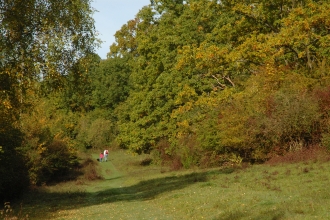I am very pleased to say that I have had the pleasure of wardening at Warburg Nature Reserve for a whole year now. And what a year it has been. It's been fantastic watching the wonderful changes at the reserve through the seasons. From the naked, frosty branches of the trees in winter, to colour bursting through with new life in spring and then exploding all over the reserve in summer. Autumn brought hues of orange and yellow before the trees finally lost their leaves once again.
I'm still enjoying watching the birds on the bird feeder from my office window, scattering occasionally when one of the two sparrowhawks dive in for their lunch. Hopefully these are a pair and we might see fledglings in spring.
Once again, I'm drawn to colourful signs that winter may be coming to an end, this year before it's really started. Hundreds of green hellebores are out along the main track between the visitor centre and the bird hide, their delicate green flowers bringing fresh colour to the woods. I wonder if we can beat last year’s count of just over a thousand plants!
A couple of impressive stinking hellebores, with their purple-tinged, drooping, green flowers, are also in full bloom just outside the visitor centre. It’s an unfair name as the plant doesn’t actually stink at all – but all parts of the plant are poisonous if ingested, despite it being a treatment for worm burdens in people in the 18th century.
Next to the car park, the elegant white blanket of snowdrops that are out in full force provide an early nectar source for any insect life that may have ventured out in the milder weather.



